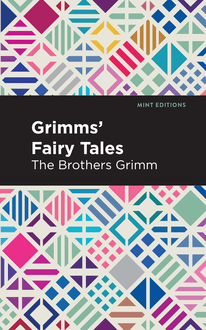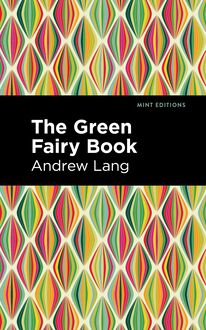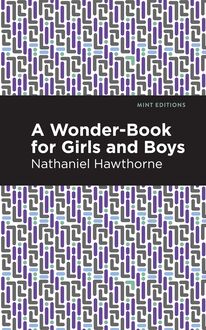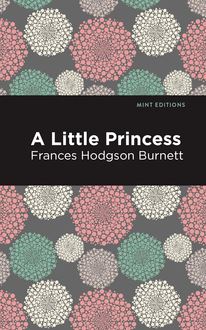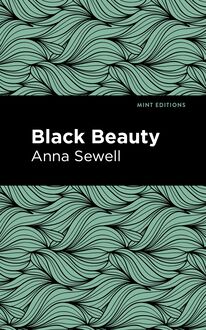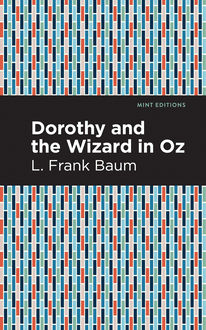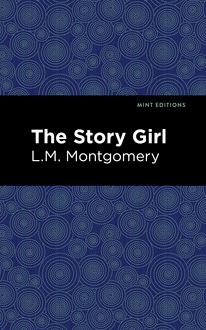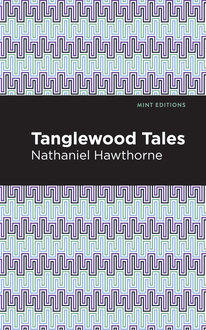-
 Univers
Univers
-
 Ebooks
Ebooks
-
 Livres audio
Livres audio
-
 Presse
Presse
-
 Podcasts
Podcasts
-
 BD
BD
-
 Documents
Documents
-
- Cours
- Révisions
- Ressources pédagogiques
- Sciences de l’éducation
- Manuels scolaires
- Langues
- Travaux de classe
- Annales de BEP
- Etudes supérieures
- Maternelle et primaire
- Fiches de lecture
- Orientation scolaire
- Méthodologie
- Corrigés de devoir
- Annales d’examens et concours
- Annales du bac
- Annales du brevet
- Rapports de stage
La lecture à portée de main
Vous pourrez modifier la taille du texte de cet ouvrage
Découvre YouScribe en t'inscrivant gratuitement
Je m'inscrisDécouvre YouScribe en t'inscrivant gratuitement
Je m'inscrisEn savoir plus
Vous pourrez modifier la taille du texte de cet ouvrage
En savoir plus

Description
Comprised of nineteen tales, The Book of Romance by Andrew and Leonora Lang is an adventurous 19th century collection of ancient lore. After the death of their king, the lands of Britian were left without a ruler, but received a prophecy from the great wizard, Merlin. He told the kingdom that their new king would emerge after proving themselves worthy of Excalibur, a might sword stuck in a stone. As the nation waited, Arthur, a meek, unexpecting boy, attempted to retrieve the sword not for himself, but on behalf of another. However, as the young boy pulled Excalibur out of its sheath of stone, he proved himself noble and deserving of the throne, thus beginning a new era. Featuring the adventures of popular members of King Arthur’s court, such as Sir Lancelot, Sir Percival, Merlin, Sir Bors, and Guinevere, The Book of Romance depicts familiar stories in an original and charming way. With dragons, quests, magic, knights, and adventures, this captivating collection allows readers to divulge into the medieval culture of King Arthur’s reign. This edition of The Book of Romance by Andrew and Leonora Lang now features an eye-catching new cover design and is printed in a font that is both modern and readable. With these accommodations, this edition of The Book of Romance creates an accessible and pleasant reading experience for modern audiences while restoring the original imagination and mastery of Andrew and Leonora Lang’s work.
Sujets
Informations
| Publié par | Mint Editions |
| Date de parution | 08 juin 2021 |
| Nombre de lectures | 1 |
| EAN13 | 9781513286778 |
| Langue | English |
| Poids de l'ouvrage | 1 Mo |
Informations légales : prix de location à la page 0,0500€. Cette information est donnée uniquement à titre indicatif conformément à la législation en vigueur.
Extrait
The Book of Romance
Andrew Lang and Leonora Blanche Lang
The Book of Romance was first published in 1902.
This edition published by Mint Editions 2021.
ISBN 9781513281759 | E-ISBN 9781513286778
Published by Mint Editions®
minteditionbooks.com
Publishing Director: Jennifer Newens
Design & Production: Rachel Lopez Metzger
Project Manager: Micaela Clark
Typesetting: Westchester Publishing Services
C ONTENTS P REFACE I. T HE D RAWING OF THE S WORD II. T HE Q UESTING B EAST III. T HE S WORD E XCALIBUR IV. T HE S TORY OF S IR B ALIN V. H OW THE R OUND T ABLE B EGAN VI. T HE P ASSING OF M ERLIN VII. H OW M ORGAN L E F AY T RIED TO K ILL K ING A RTHUR VIII. W HAT B EAUMAINS A SKED OF THE K ING IX. T HE Q UEST OF THE H OLY G RAIL X. T HE F IGHT FOR THE Q UEEN XI. T HE F AIR M AID OF A STOLAT XII. L ANCELOT AND G UENEVERE XIII. T HE E ND OF IT A LL XIV. T HE B ATTLE OF R ONCEVALLES XV. T HE P URSUIT OF D IARMID XVI. S OME A DVENTURES OF W ILLIAM SHORT N OSE XVII. W AYLAND THE S MITH XVIII. T HE S TORY OF R OBIN H OOD XIX. T HE S TORY OF THE G RETTIR THE S TRONG
P REFACE
It is to be supposed that children do not read Prefaces; these are Bluebeard’s rooms, which they are not curious to unlock. A few words may therefore be said about the Romances contained in this book. In the editor’s opinion, romances are only fairy tales grown up. The whole mass of the plot and incident of romance was invented by nobody knows who, nobody knows when, nobody knows where. Almost every people has the Cinderella story, with all sorts of variations: a boy hero in place of a girl heroine, a beast in place of a fairy godmother, and so on. The Zu ñ is, an agricultural tribe of New Mexico, have a version in which the moral turns out to be against poor Cinderella, who comes to an ill end. The Red Indians have the tale of Orpheus and Eurydice, told in a very touching shape, but without the music. On the other hand, the negroes in the States have the Orpheus tale, adapted to plantation life, in a form which is certainly borrowed from Europeans. This version was sent to me some years ago, by Mr. Barnet Phillips, Brooklyn, New York, and I give it here for its curiosity. If the proper names, Jim Orpus and Dicey, had not been given, we might not feel absolutely certain that the story was borrowed. It is a good example of adaptation from the heroic age of Greece to the servile age of Africans.
Dicey and Orpus
D AT WAR EBER SO LONG ago, ’cause me granmammy tell me so. It h’aint no white-folks yarn—no Sah. Gall she war call Dicey, an’ she war borned on de plantation. Whar Jim Orpus kum from, granmammy she disremember. He war a boss-fiddler, he war, an’ jus’ that powerful, dat when de mules in de cotton field listen to um, dey no budge in de furrer. Orpus he neber want no mess of fish, ketched wid a angle. He just take him fiddle an’ fool along de branch, an’ play a tune, an’ up dey comes, an’ he cotch ’em in he hans. He war mighty sot on Dicey, an’ dey war married all proper an’ reg’lar. Hit war so long ago, dat de railroad war a bran-new spick an’ span ting in dose days. Dicey once she lounge ’round de track, ’cause she tink she hear Orpus a fiddlin’ in de fur-fur-away. Onyways de hengine smash her. Den Jim Orpus he took on turrible, an’ when she war buried, he sot him down on de grave, an’ he fiddle an’ he fiddle till most yo’ heart was bruk.
An’ he play so long dat de groun’ crummle (crumble) an’ sink, an’ nex’ day, when de peoples look for Jim Orpus, dey no find um; oney big-hole in de lot, an’ nobody never see Jim Orpus no mo’. An’ dey do say, dat ef yo’ go inter a darky’s burial-groun’, providin’ no white man been planted thar, an’ yo’ clap yo’ ear to de groun’, yo’ can hear Jim’s fiddle way down deep belo’, a folloin’ Dicey fru’ de lan’ of de Golden Slippah. 1
T HE ORIGINAL TOUCH , THE SOUND of Orpus’s fiddle heard only in the graveyards of the negroes (like the fairy music under the fairy hill at Ballachulish), is very remarkable. Now the Red Indian story has no harper, and no visit by the hero to the land of the dead. His grief brings his wife back to him, and he loses her again by breaking a taboo, as Orpheus did by looking back, a thing always forbidden. Thus we do not know whether or not the Red Indian version is borrowed from the European myth, probably enough it is not. But in no case—not even when the same plot and incidents occur among Egyptians and the Central Australian tribes, or among the frosty Samoyeds and Eskimo, the Samoans, the Andamanese, the Zulus, and the Japanese, as well as among Celts and ancient Greeks—can we be absolutely certain that the story has not been diffused and borrowed, in the backward of time. Thus the date and place of origin of these eternal stories, the groundwork of ballads and popular tales, can never be ascertained. The oldest known version may be found in the literature of Egypt or Chald æ a, but it is an obvious fallacy to argue that the place of origin must be the place where the tale was first written down in hieroglyph or cuneiform characters.
There the stories are: they are as common among the remotest savages as among the peasants of Hungary, France, or Assynt. They bear all the birth-marks of an early society, with the usual customs and superstitions of man in such a stage of existence. Their oldest and least corrupted forms exist among savages, and people who do not read and write. But when reading and writing and a class of professional minstrels and tellers of tales arose, these men invented no new plots, but borrowed the plots and incidents of the world-old popular stories. They adapted these to their own condition of society, just as the plantation negroes adapted Orpheus and Eurydice. They elevated the nameless heroes and heroines into Kings, Queens, and Knights, Odysseus, Arthur, Charlemagne, Diarmid, and the rest. They took an ancient popular tale, known all over the earth, and attributed the adventures of the characters to historical persons, like Charlemagne and his family, or to Saints, for the legends of early Celtic Saints are full of fairy-tale materials. Characters half historic, half fabulous, like Arthur, were endowed with fairy gifts, and inherited the feats of nameless imaginary heroes.
The results of this uncritical literary handling of elements really popular were the national romances of Arthur, of Charlemagne, of Sigurd, or of Etzel. The pagan legends were Christianised, like that of Beowulf; they were expanded into measureless length, whole cycles were invented about the heroic families; poets altered the materials each in his own way and to serve his own purpose, and often to glorify his own country. If the Saracens told their story of Roland at Roncevalles, it would be very different from that of the old Frankish chansons de geste . Thus the romances are a mixture of popular tales, of literary invention, and of history as transmitted in legend. To the charm of fairy tale they add the fascination of the age of chivalry, yet I am not sure but that children will prefer the fairy tale pure and simple, nor am I sure that their taste would be wrong, if they did.
In the versions here offered, the story of Arthur is taken mainly from Malory’s compilation, from sources chiefly French, but the opening of the Graal story is adapted from Mr. Sebastian Evans’s “High History of the Holy Graal,” a masterpiece of the translator’s art. For permission to adapt this chapter I have to thank the kindness of Mr. Evans.
The story of Roland is from the French Epic, probably of the eleventh century, but resting on earlier materials, legend and ballad. William Short Nose is also from the chanson de geste of that hero.
The story of Diarmid, ancient Irish and also current among the Dalriadic invaders of Argyle, is taken from the translations in the Transactions of the Ossianic Society.
The story of Robin Hood is from the old English ballads of the courteous outlaw, whose feast, in Scotland, fell in the early days of May. His alleged date varies between the ages of Richard I and Edward II, but all the labours of the learned have thrown no light on this popular hero.
A child can see how English Robin is, how human, and possible and good-humoured are his character and feats, while Arthur is half Celtic, half French and chivalrous, and while the deeds of the French Roland, and of the Celtic Diarmid, are exaggerated beyond the possible. There is nothing of the fairylike in Robin, and he has no thirst for the Ideal. Had we given the adventures of Sir William Wallace, from Blind Harry, it would have appeared that the Lowland Scots could exaggerate like other people.
The story of Wayland the Smith is very ancient. An ivory in the British Museum, apparently of the eighth century, represents Wayland making the cups out of the skulls. As told here the legend is adapted from the amplified version by Oehlenschl ä ger. Scott’s use of the story in “Kenilworth” will be remembered.
All the romances are written by Mrs. Lang, except the story of Grettir the Strong, done by Mr. H. S. C. Everard from the saga translated by Mr. William Morris.
A. L ANG
1 . Mr. Phillips, writing in 1896, says that the tale was told him by a plantation hand, thirty years ago, “long before the Uncle Remus period.”
I
T HE D RAWING OF THE S WORD
Long, long ago, after Uther Pendragon died, there was no King in Britain, and every Knight hoped to seize the crown for himself. The country was like to fare ill when laws were broken on every side, and the corn which was to give the poor bread was trodden underfoot, and there was none to bring the evildoer to justice. Then, when things were at their worst, came forth Merlin the magician, and fast he rode to the place where the Archbishop of Canterbury had his dwelling. And they took counsel together, and agreed that all the lords and gentlemen of Britain should ride to London and meet on Christmas Day, now at hand, in the Great Church. So t
-
 Univers
Univers
-
 Ebooks
Ebooks
-
 Livres audio
Livres audio
-
 Presse
Presse
-
 Podcasts
Podcasts
-
 BD
BD
-
 Documents
Documents
-
Jeunesse
-
Littérature
-
Ressources professionnelles
-
Santé et bien-être
-
Savoirs
-
Education
-
Loisirs et hobbies
-
Art, musique et cinéma
-
Actualité et débat de société
-
Jeunesse
-
Littérature
-
Ressources professionnelles
-
Santé et bien-être
-
Savoirs
-
Education
-
Loisirs et hobbies
-
Art, musique et cinéma
-
Actualité et débat de société
-
Actualités
-
Lifestyle
-
Presse jeunesse
-
Presse professionnelle
-
Pratique
-
Presse sportive
-
Presse internationale
-
Culture & Médias
-
Action et Aventures
-
Science-fiction et Fantasy
-
Société
-
Jeunesse
-
Littérature
-
Ressources professionnelles
-
Santé et bien-être
-
Savoirs
-
Education
-
Loisirs et hobbies
-
Art, musique et cinéma
-
Actualité et débat de société
- Cours
- Révisions
- Ressources pédagogiques
- Sciences de l’éducation
- Manuels scolaires
- Langues
- Travaux de classe
- Annales de BEP
- Etudes supérieures
- Maternelle et primaire
- Fiches de lecture
- Orientation scolaire
- Méthodologie
- Corrigés de devoir
- Annales d’examens et concours
- Annales du bac
- Annales du brevet
- Rapports de stage
